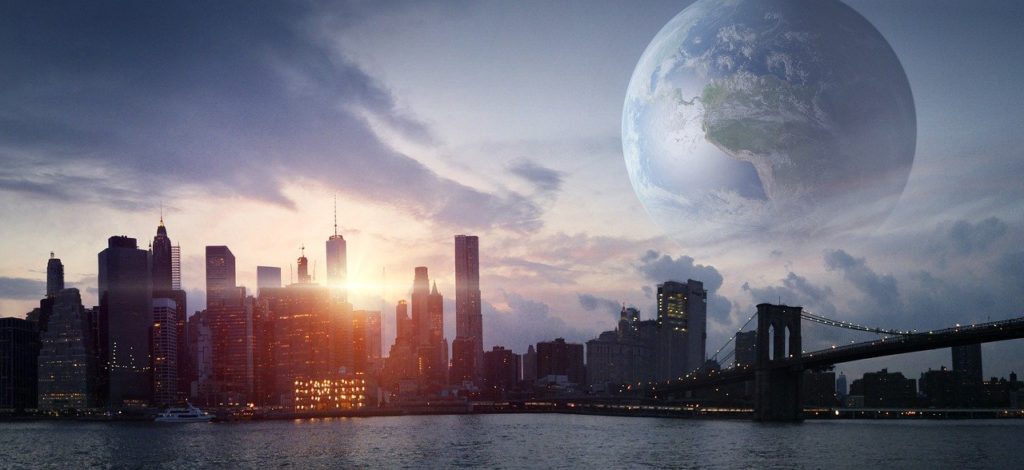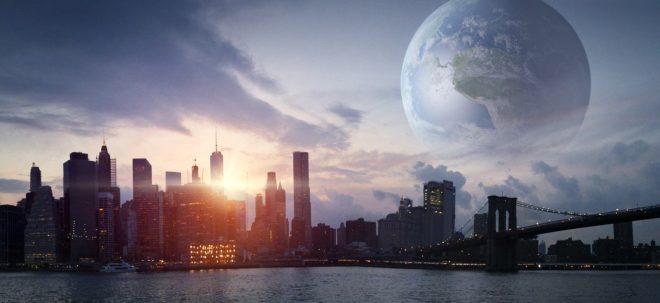The other day, I listened to the Writer’s Journey podcast with guest J. Diane Dotson. The topic was worldbuilding. Diane is a science fiction writer who’s clearly read Asimov. Some of the details she mentions come straight out of Asimov’s work. One thing she mentioned was what it looks like to be in a setting. That caught my attention. Not because, as TS Hottle, I write a sprawling series across multiple worlds. Rather, because I wrote and signed a novel called Holland Bay. And Holland Bay came about because of worldbuilding.

No, I didn’t set a police procedural on another planet. Rather, I took a page from Ed McBain’s playbook. All four novels and two-thirds of the short stories I’ve written take place in Cleveland. However, I left Northeast Ohio for good in 1991. Since about 2007, it’s been highly unlikely I’d ever move back. Even more recently, the city is now unrecognizable to me in terms of geography and culture. It’s not the Cleveland I grew up in. Sure, it’s great to be able to take a trip north and go to certain places. Last time I went up by myself, however, the apartment building Nick Kepler lived in and its attendant convenience store across the street, not to mention the abandoned church I converted to a bar, had all disappeared.
Meanwhile, driving around Cincinnati, where I’ve lived for the past thirty years, I noticed a few things about the place that made Cincinnati Cincinnati. You notice certain things popping up like names. In Cleveland, it was always names like Carnegie or Eaton or Rockefeller. In Cincy, it’s Taft, Stettinius, or Hudepohl. Some street names are corruptions or deliberate alterations. Vine Street, for instance, was Rhine Street prior to World War I.
I also noticed I didn’t like most fictional cities in crime fiction and in comics. It’s one of the things about DC comics I don’t really care for. Superman lives in the most generically named city ever, Metropolis, while it’s Gotham City for Batman. Other action takes place in Central City. It goes on and on. Soap Operas give us Port Charles and Genoa City because using New York or Chicago is just so damn hard.
As I looked to move on from Nick Kepler, it was Batman Begins that turned on the lightbulb for me. Christopher Nolan’s Gotham City looked real and not like the not-quite-disguised Los Angeles of the Adam West version or the perpetually storm-soaked monstrosity upchucked from Hell that is the Tim Burton/Joel Schumacher versions. Nolan used Chicago, and, especially in The Dark Knight, you could see Chicago quite clearly.
But you can’t. Nolan cleverly used Chicago’s landmarks and geography to create a city that sits across the Narrows from Metropolis. I watched Batman Begins, and said to the then-spousal unit, “I want one of those.” So, I began building a city.
Originally, it had the incredibly dull name of Port Ontario. The location worked. I put it forty miles west of Cleveland, adding geography that, if we’re honest, could never really exist there. This new fictional city straddles a river valley where, in reality, the unrelenting flatness of the American Plains begins in earnest. Quite literally, everything north of Columbus and Dayton and west of Lorain County is prairie. It made my first drive to Canada mind-numbing until I got across the Ambassador bridge. (That’s nothing. Try driving across Kansas for six hours.) But this is fiction.
I decided Port Ontario took up half a fictional Musgrave County whose borders are the combined real-life borders of Lake and Erie Counties. Also, I grounded it in reality. You can look out from the bluffs and see Cedar Point Amusement Park and Put in Bay. To the south lies Milan (pronounced My-lan), birthplace of Thomas Edison.
Then I wrote a history. The city was founded by British defectors and their Indian allies during the Revolution. The first mayor was a Huron named Joseph Yellow Eyes. One of the sections of the city used to be its own city and found itself annexed in one of those river/border wars that characterized the Midwest years before the Civil War and the railroad booms. Like it’s nearby neighbor Cleveland, it boomed and expanded with the Industrial Revolution and the post-World War II economy. It had river disasters and a mayor who barricaded himself in his office before federal agents yanked him out (and later, a show on Fox News. How’s that for an ex-Hippie mayor?) As I wrote this elaborate and detailed history, names emerged of companies, people, and places. Some streets and roads refer to other places nearby. And then I divided the city up into six boroughs because why not?
The boroughs all had different characters based not only on the New York bouroughs (and Long Island to make up the sixth), but other cities as well. They’re almost separate towns unto themselves. Harbortown is the original city, the downtown. Holland Island is modeled on Buckheads in Atlanta, giving this fictional city a very different racial dynamic. Rock Ridge is the working class west side while Vodrey Heights is the white-collar east. In the middle is the decaying industrial heart that is Midtown. Beyond it all is a swath of former suburbs absorbed and in search of an identity I originally called “Huron.” Only, there is a Huron, Ohio. (It’s in where Harbortown would be. Thanks for asking.) So, I played on history from nearby Milan and called it Edison. Finally, I hated the name of the city itself. Port Ontario is one of those names that annoy me about fictional towns. “Central City,” “Port Charles.” It sounds like someone took two seconds to think up a name and moved onto weightier matters, like where all the White Castles are. So I changed it to Monticello, for Thomas Jefferson’s estate.
So I have my geography, my detailed history, and all the little quirks that makes a city instantly identifiable. I built it around the characters. Right?
Well, no. Some of the characters pre-existed Holland Bay. One came from a PI novel I ended up scrapping. Another came from a thriller I planned to write about making 9/11 much worse than it ended up. (Hint: A nuclear power plant sits near the site of Monticello. Do the math.) But the story itself came from the city’s old port, slowly transitioning out onto Lake Erie.
Maybe this is a backwards approach to creating a series or a novel, but it’s how I work. I want to know where I want to tell a story before I tell the story. Not always, but this is what has worked so far. A good setting will generate its own stories.
